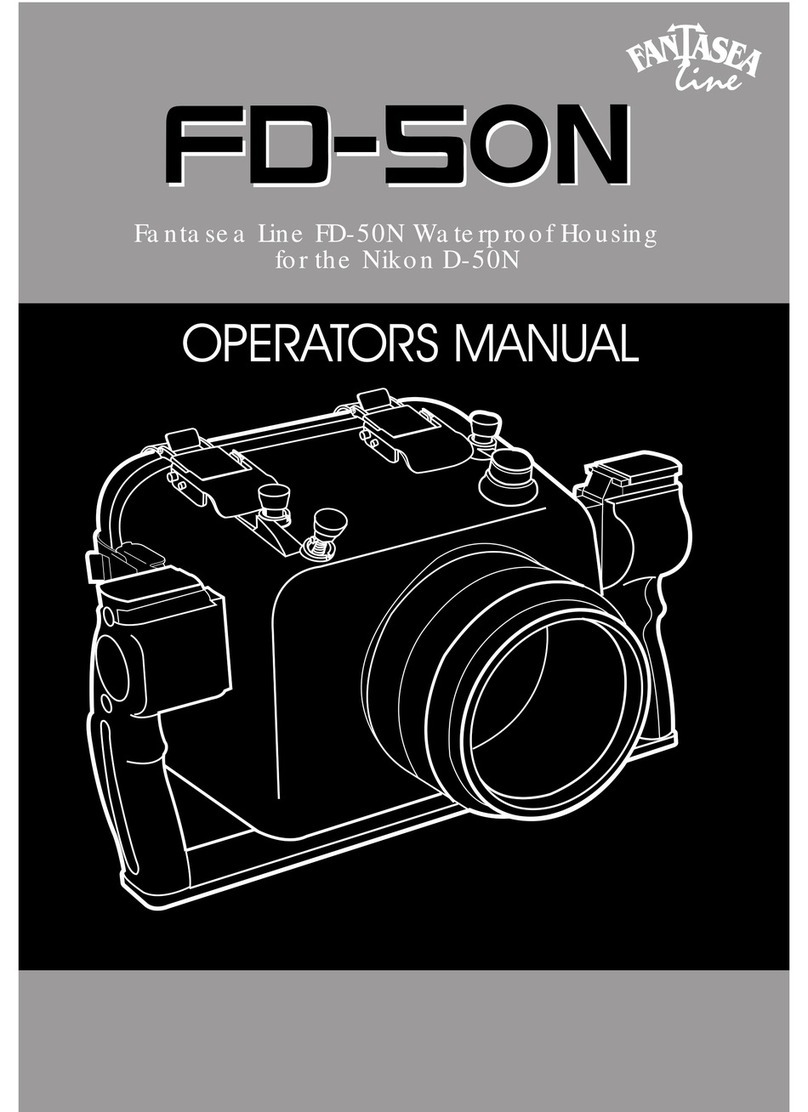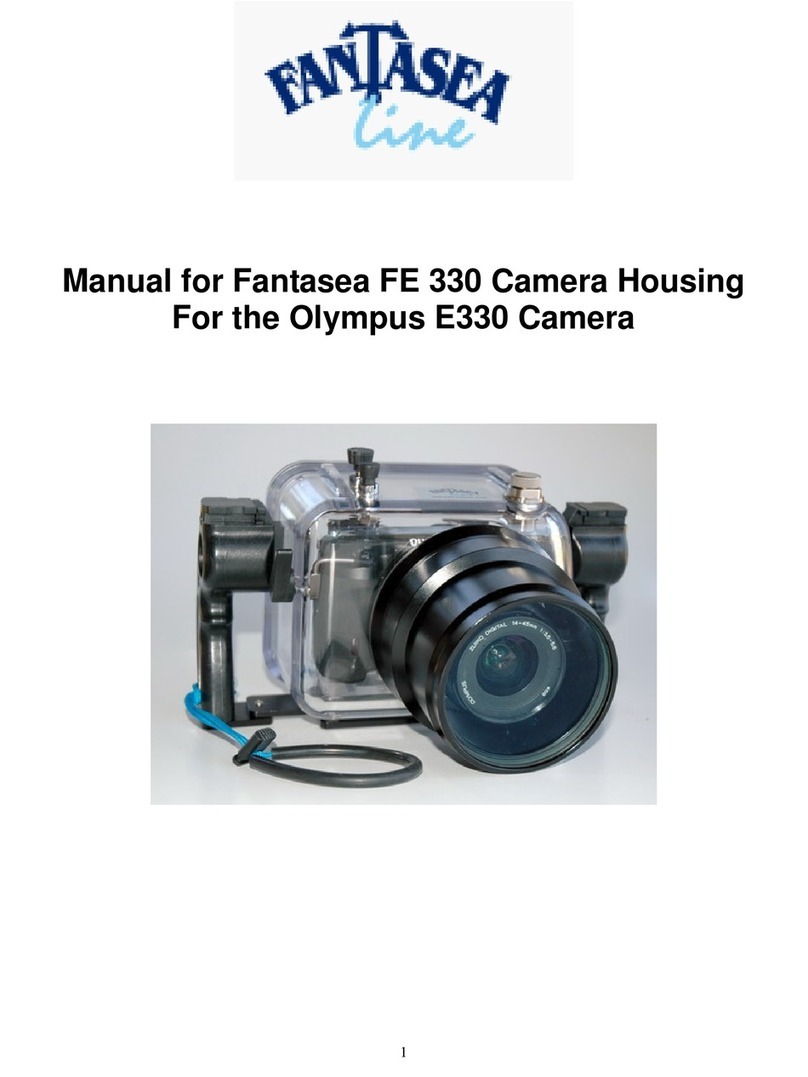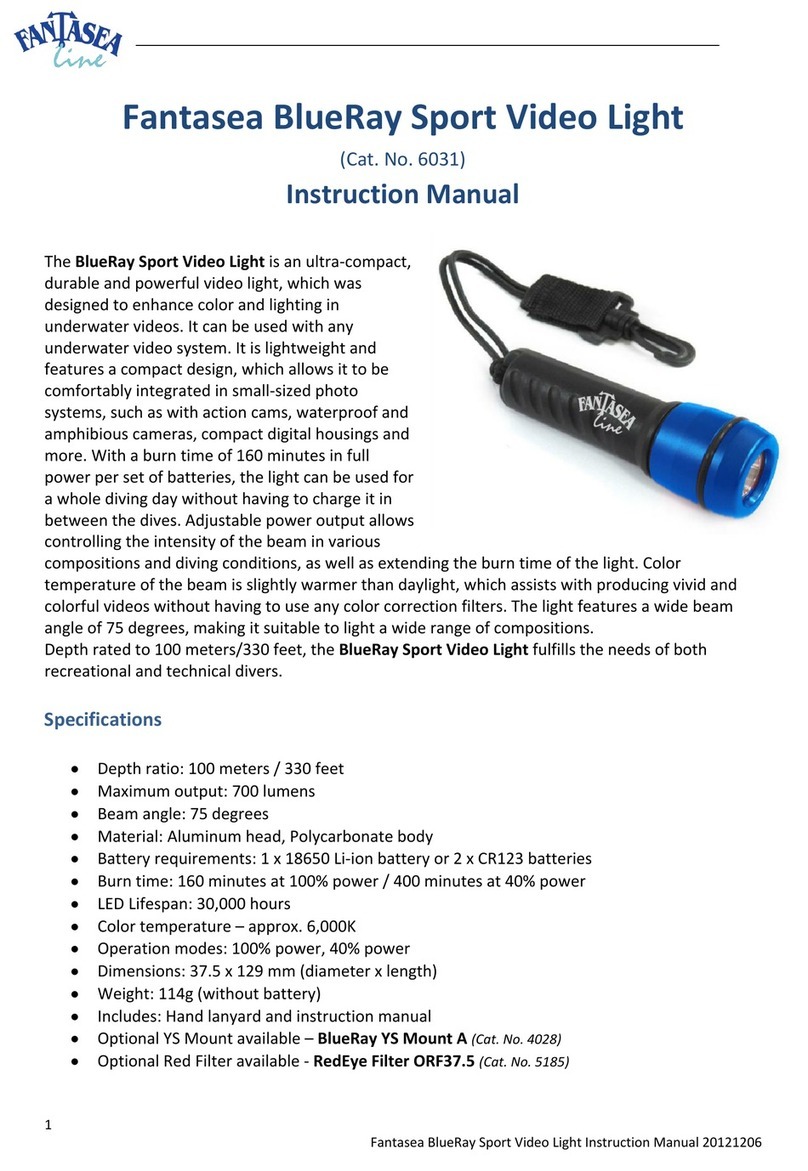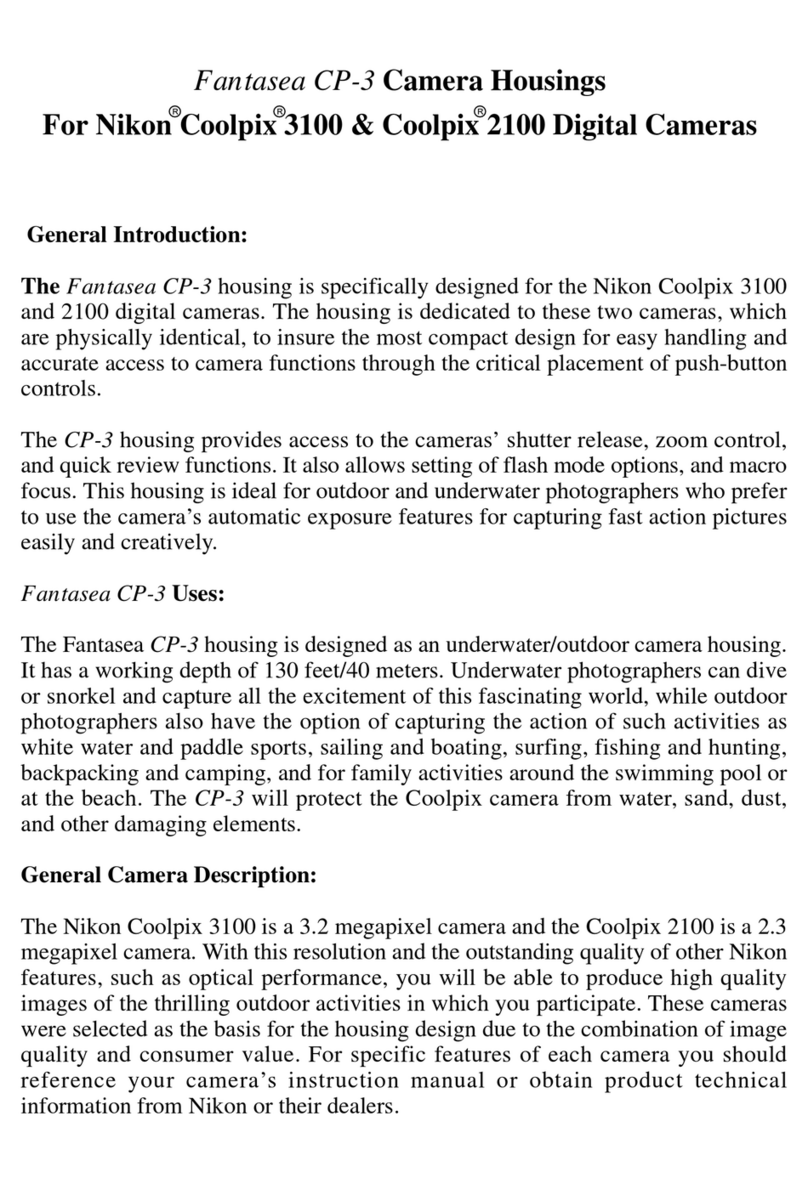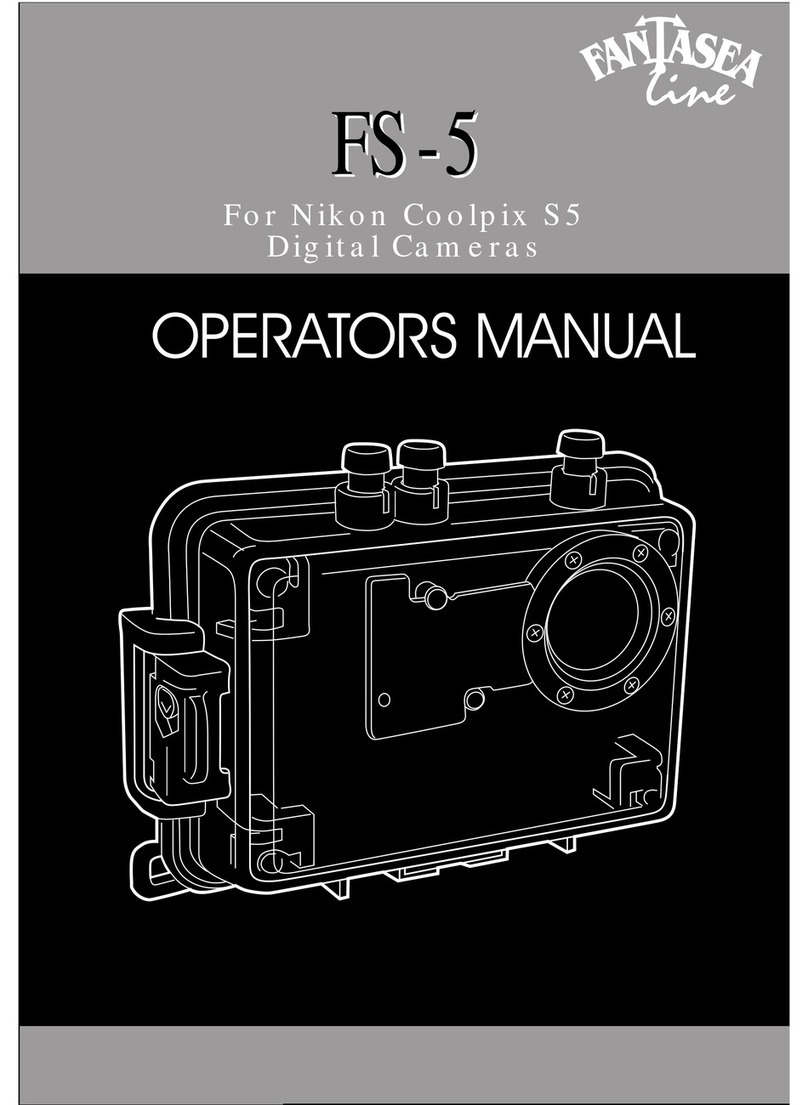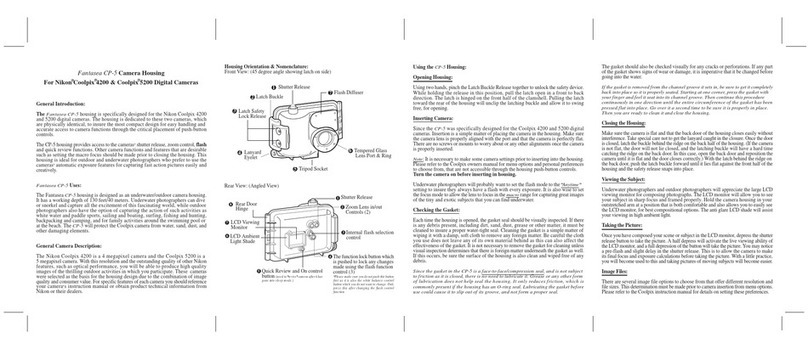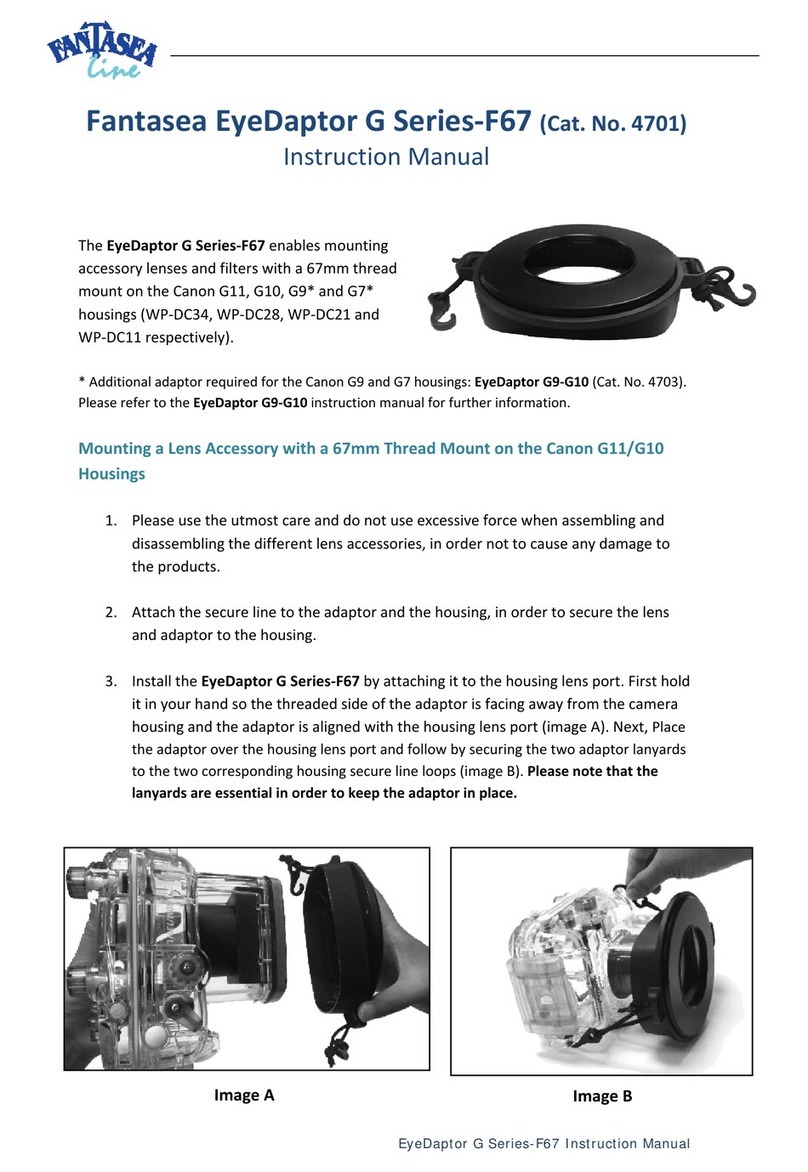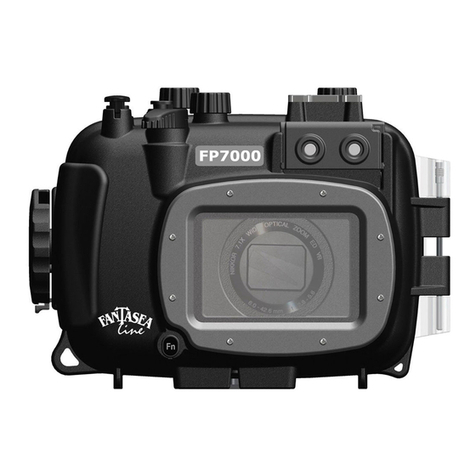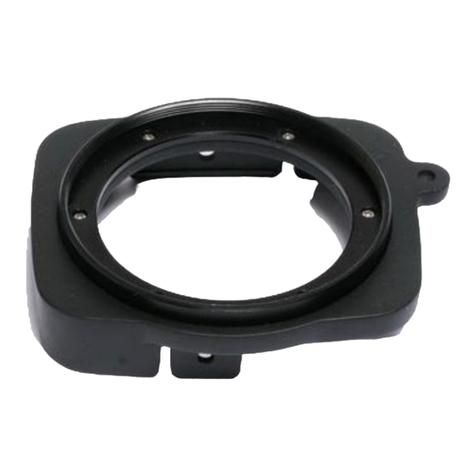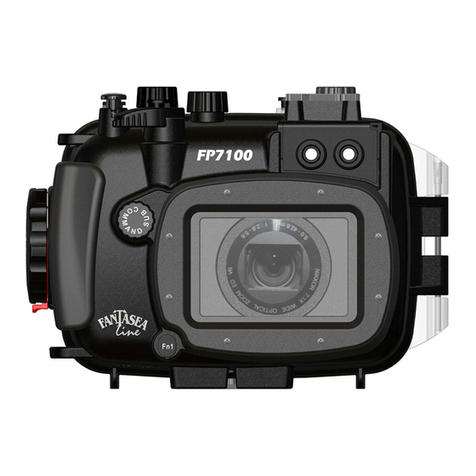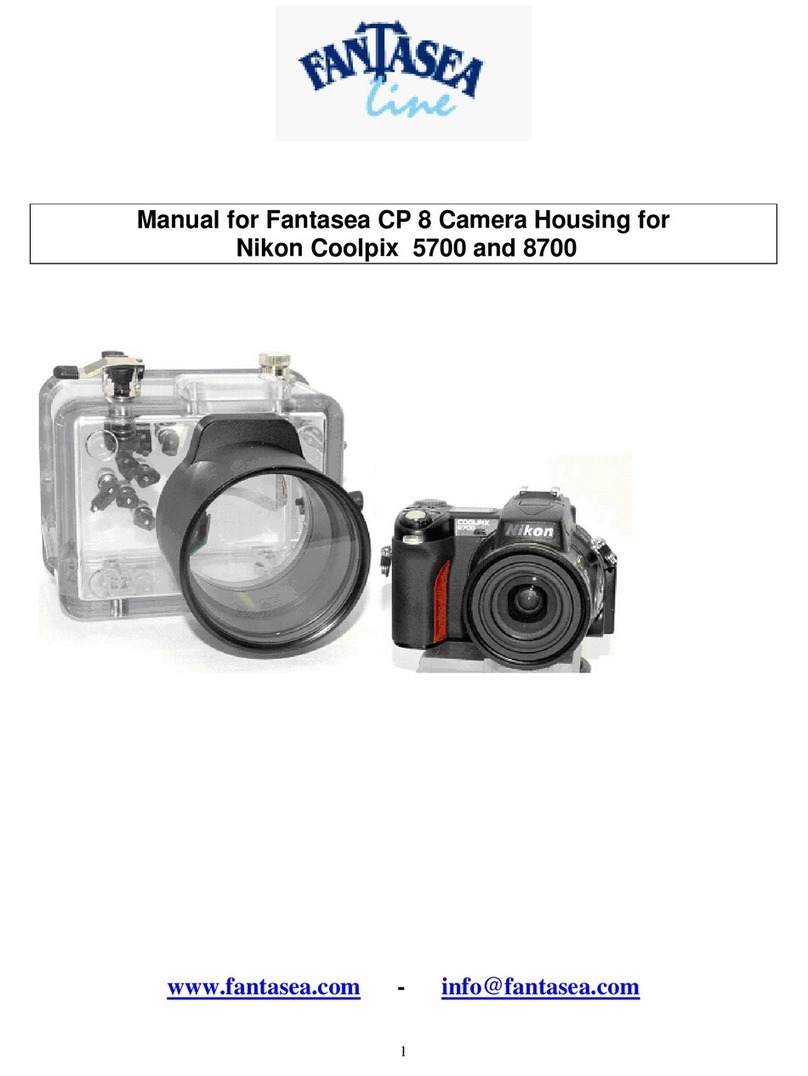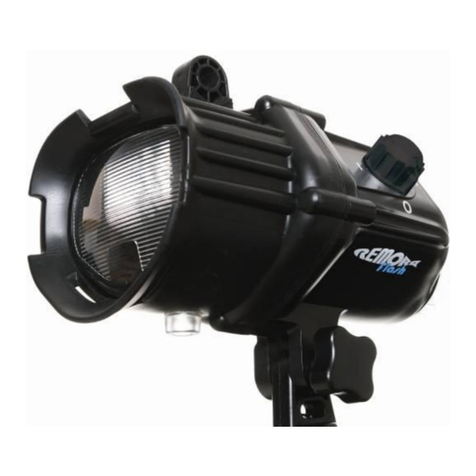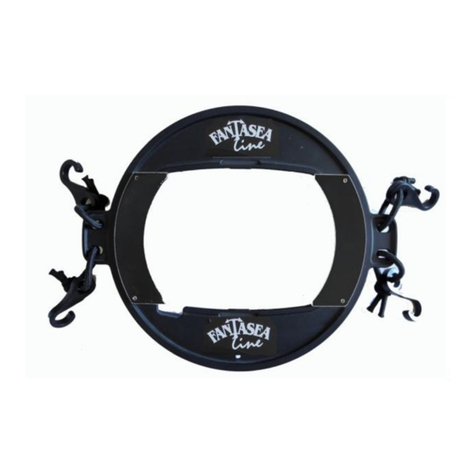1615
Basic Shooting Techniques
The housing's main compression and port O-ring should be replaced
every year or more often if used frequently. The frequency of replacement
depends on the user's inspection of these seals and their condition at the
time. If in doubt, it is always better to change them in order to not take
the chance of flooding the housing.
The seals on each of the controls should be replaced every couple of
years or more often if needed. The best indicator of the need for
replacement is if the controls become harder to operate due to a build
up of salt or corrosion.
Store housing in a cool, dry location when not traveling. It is recommended
that the housing be stored with the two halves together, but not with the
latching buckles closed. This will take the constant pressure off the main
radial o-ring. It is also recommended that the housing is not stored with
the port mounted.
o
o
o
Getting familiar with the location and movement of all the controls and
how the changes in settings can affect your image is an important part
of the process. It is better to learn the basics of the camera's operation
on land, rather than when first underwater. It is faster to operate the
camera out of the housing and you will not have the limited time frame
as you would if you were underwater.
Practice handling the 400D on land
o
Get used to operating this control on the camera in both half depress,
and full depress movements. You will frequently depress the shutter
release only half way to activate the exposure meter and auto focus to
preview the shooting conditions and make setting changes. Once you
get the feel for operating the camera control directly, you can then try
it in the housing, using the housing's controls in the same manner.
o
oUsing the camera in its Manual (M) Exposure Mode gives you the
ability to change either shutter speeds or apertures to control the exposure
the way you want. Get used to making these changes while your eye
is in the viewfinder. To activate aperture change in the manual mode,
you must depress the Command Control button and then rotate the reel
dial. Practice operating each of these controls so they become instinctive
in operation.
Changing Exposure Settings
o
Get close to you subject when shooting underwater
Choose those that are easy to approach and will not scare off readily
when you approach. Choose subjects that will result in a large image
size. This will make a more dramatic image.
Begin by choosing subjects
Focusing and Shutter release control
Use the viewfinder eyepiece
oCompose and view exposure information display. It is very important
that you become familiar with the information display in the viewfinder
so you can make proper exposure settings and know what other settings
have been made. You will use this often and it is good to become familiar
with it before attempting to read it underwater. Also practice composing
and focusing the camera by eye, before using it underwater to get the
feel for this operation as well.
Utilizing each housing control to properly and efficiently change camera
settings. Some controls only require a straight pushing movement, while
others may require rotating and pushing simultaneously to operate.
Familiarize yourself with the movements required
o
Using the camera's light meter to determine ambient light
Read the Canon 400D instruction manual for complete description of
its light meter and its use. It will help guide you to the proper shutter
speed and aperture combination for proper ambient light exposure.
Where you aim the meter is also important. In underwater photography,
it is important to remember to aim the meter at the background water
or "sky" to get the proper exposure information. It is often necessary
to gather this information, make your exposure settings, and then re-
compose the scene before shooting.
o
Sometimes it is good to operate theAE-L button
When locking in the exposure value of the background before re-
composing and taking the photo.
o
The ISO Sensitivity setting on the camera
This is the same as the film speed that photographers set on film cameras,
with one small difference: There is no film.This setting is the equivalent
of the film speed you would normally set. The higher the ISO sensitivity
number, the more light is captured and the brighter the image. Higher
ISO sensitivity numbers have more "Noise", a term that is the digital
equivalent of grain in higher speed films. Try starting out with a lower
ISO sensitivity such as ISO 200 if the lighting conditions permit.
o
This will improve the effectiveness of your strobe in restoring lost color.
It will also expand the sharpness of the image by reducing the amount
of backscatter between the lens and the subject.
o




